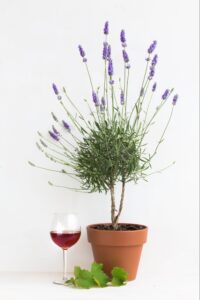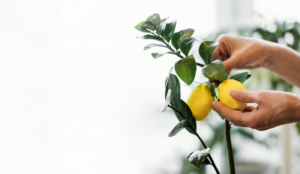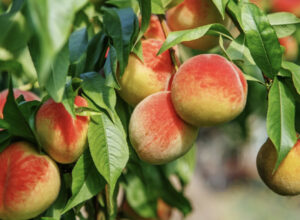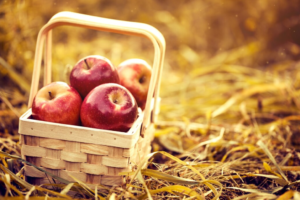How to Care for a Hibiscus Tree: A Comprehensive Guide
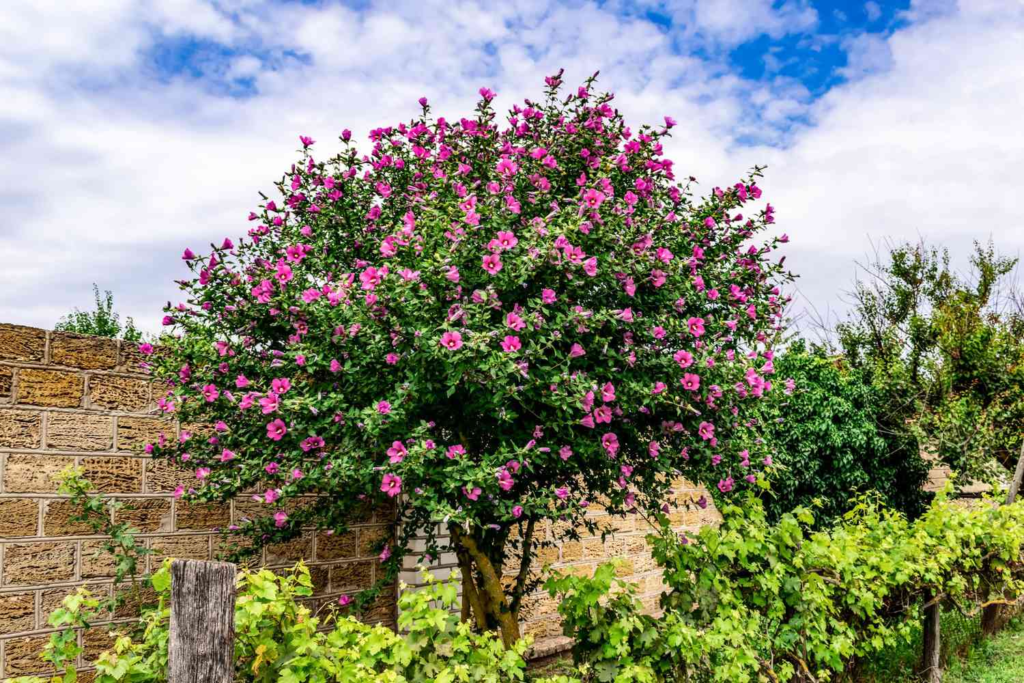
Hibiscus, a captivating genus of subtropical woody shrubs and trees, is celebrated for its brilliant, trumpet-like blooms, often accentuated with a striking filament. Achieving heights of 8–16 feet and a width of 5–10 feet, these plants are relatively low-maintenance given the right conditions. The proper balance of sunlight, soil type, and water can ensure its thriving growth. This guide delves deeper into the nuances of cultivating and maintaining a hibiscus tree.
Expanding Zones and Climate Considerations
Tropical Hibiscus Growth Zones
Hibiscus thrives outdoors, either potted or grounded, in USDA zones 9 to 11. In cooler climates, ensure you move it indoors during frosty seasons.
Planting Procedures
Purchasing a hibiscus tree, especially one with budding flowers, is usually the go-to for most enthusiasts. A healthy tree exhibits vibrant green foliage devoid of spots. Once acquired, you have the choice of planting it directly into the ground or into a pot.
Ground Planting Steps
- Choose a sunny location with well-draining soil.
- Dig a hole, is slightly more expansive than the tree’s rootball.
- Introduce compost to the hole and integrate it with the existing soil.
- Place the tree, ensuring the rootball top aligns with the ground level.
- Refill the hole with soil, and water, and supplement with more soil if needed.
Care Instructions for Hibiscus Trees
Light Requirements
Hibiscus trees flourish in full sun. Aim for a location that receives 6-8 hours of sunlight. If indoors, position near a brightly lit window.
Watering Regimen
Monitor the soil’s moisture. When the top layer dries, it’s time for watering. Depending on the season and climate, your watering frequency may vary.
Fertilizing Needs
Opt for slow-release fertilizers to encourage growth and vibrant blooming.
Temperature Preferences
The sweet spot for hibiscus lies between 60 and 85 degrees Fahrenheit. Cold spells below 55 degrees warrant a move indoors.
Hibiscus Propagation
Hibiscus trees are surprisingly simple to propagate. Early spring, before the bloom buds manifest, is the ideal time for cuttings.
Hibiscus Challenges and Solutions
Even a resilient plant like the hibiscus can face challenges. Awareness of potential issues like mealybug infestations, yellowing leaves, and fungal diseases can enable early intervention and remediation.
Comparative Table: Hibiscus vs. Other Popular Trees
| Feature | Hibiscus | Maple | Oak |
| Max Height | 16 ft | 50 ft | 70 ft |
| Bloom | Brightly colored | No | No |
| USDA Zones | 9-11 | 3-9 | 3-9 |
| Light Needs | Full Sun | Full-Partial Sun | Full Sun |
| Water Needs | Moderate | Moderate | Low |
Proper Care for Hibiscus
The hibiscus, known for its large, vibrant blooms and tropical allure, is a favorite among gardeners and plant enthusiasts. However, to truly enjoy its stunning beauty, proper care is essential. This guide will walk you through the essential steps to ensure your hibiscus thrives and continues to grace your garden with its mesmerizing flowers.
Location and Light
- Sunlight: Hibiscus plants love sunlight. They prefer a location that receives at least 6–8 hours of direct sunlight daily. If you’re growing them indoors, place them near a south-facing window.
- Protection: While they enjoy the sun, hibiscus plants can benefit from light afternoon shade, especially in extremely hot climates. This can prevent leaf scorching and ensure blooms remain vibrant.
Watering and Humidity
- Watering Frequency: Hibiscus requires consistent watering. Keep the soil consistently moist, but not soggy. A good rule of thumb is to water when the top inch of the soil feels dry.
- Humidity: Hibiscus plants thrive in humid conditions. If your area lacks humidity, especially during winter months, consider using a humidity tray or a room humidifier.
Soil and Fertilization
- Soil Type: Hibiscus prefers well-draining soil. A mixture of potting soil, peat moss, and perlite can work wonders. Ensure that your pot has good drainage holes to prevent waterlogging.
- Fertilization: Hibiscus plants are heavy feeders. During their growing season, feed them every two weeks with a balanced liquid fertilizer. Reduce feeding during the winter months.
Pruning and Maintenance
- Pruning: Regularly prune your hibiscus to encourage bushier growth and more blooms. Remove dead or yellowing leaves and spent blooms to encourage new growth. It’s best to prune in the early spring before new growth begins.
- Pests: Watch out for pests like aphids, spider mites, and whiteflies. Regularly inspect the plant and use insecticidal soap or neem oil as a preventive measure.
Overwintering
If you live in a region where temperatures drop below freezing, you’ll need to protect your hibiscus from the cold.
- Indoors: Move potted hibiscus plants indoors before the first frost. Place them in a location where they’ll receive ample sunlight, or use grow lights.
- Outdoors: For in-ground plants, mulch around the base to protect the roots from freezing temperatures. Consider using frost cloths or blankets to shield the plant on particularly cold nights.
Deep Dive into Hibiscus Varieties
There are over 200 species of hibiscus, each with unique features. The tropical hibiscus is commonly found in gardens, but other varieties like the Rose of Sharon and Swamp Hibiscus also have their merits. This section will explore the diverse range and characteristics of hibiscus varieties.
Benefits of Hibiscus in Landscaping
Introducing hibiscus into your landscape is not just about aesthetics. This plant can offer shade, act as a natural barrier, and even improve soil health. Furthermore, its vivid blooms can attract pollinators, enhancing the biodiversity of your garden.
The Therapeutic Uses of Hibiscus
From ancient practices to contemporary medicine, hibiscus has consistently played a therapeutic role. In traditional medicinal systems, particularly in Asia and Africa, various parts of the hibiscus plant, including its flowers, leaves, and roots, have been used for their therapeutic benefits. For instance, hibiscus tea is often recommended for its potential to lower high blood pressure. The rich antioxidants in the tea, particularly flavonoids, have been linked to various health benefits, including reducing the risk of chronic diseases and promoting overall heart health.
Moreover, hibiscus extracts have shown potential in skin care. The natural acids in the flowers act as exfoliants, helping with cell turnover and resulting in a fresher, younger-looking complexion. Its oil-absorbing properties and ability to reduce surface oils make it ideal for oily or acne-prone skin. Given its soothing properties, it’s also an ingredient in treatments for sensitive skin.
For those seeking natural remedies, hibiscus also offers promise in hair care. It’s believed to stimulate hair growth, reduce hair loss, and prevent premature graying. This makes hibiscus-infused oils and shampoos increasingly popular in holistic hair care routines.
Hibiscus in Popular Culture
The influence of hibiscus extends beyond gardens and kitchens, making a noticeable mark in popular culture. From music and movies to literature, this captivating flower has served as both a symbol and muse. In music, the hibiscus often evokes feelings of tropical paradises, romance, and deep nostalgia. Songwriters pen lyrics that bring listeners to exotic destinations, where the flower symbolizes fleeting moments of love and passion.
In films, especially those set in tropical locales, the hibiscus often adorns characters, showcasing a connection to the environment or representing a free-spirited personality. This is particularly evident in films that explore themes of adventure, discovery, or romantic escapades.
In literature, the hibiscus serves as a versatile symbol. Authors use it to delve deep into topics of identity, growth, beauty, and decay. The flower’s transient bloom becomes a metaphor for the fleeting nature of life, while its vibrant colors symbolize the rich tapestry of human emotions.
Hibiscus in Environmental Conservation
Amidst the rising concerns about environmental degradation and habitat loss, the role of plants like hibiscus in conservation efforts has become pivotal. Hibiscus species, especially those endemic to specific regions, are now part of conservation strategies aimed at preserving biodiversity. By safeguarding these species, conservationists are also protecting the intricate web of life that depends on them – from pollinators like bees and butterflies to birds and mammals.
Several hibiscus species are now listed as endangered, prompting the need for habitat restoration and protection against invasive species. Community-driven conservation efforts often focus on educating the public about the ecological importance of hibiscus and other native plants.
Additionally, hibiscus serves as an indicator species in some regions. Their health often reflects the overall well-being of the ecosystem. Conservationists monitor the health of hibiscus plants to gauge the impact of environmental changes and to inform strategies for ecological restoration.
In an age where balancing human development with nature conservation is crucial, the hibiscus emerges as a symbol of both the beauty of our natural world and the urgent need to protect it.
The Historical Significance of Hibiscus
Historically, hibiscus has played a significant role in various cultures around the globe. In Ancient Egypt, the hibiscus flower was associated with lust and passion. It was believed that consuming hibiscus tea could ignite one’s desires. Meanwhile, in Hawaii, the hibiscus flower is a symbol of old royalty and is used to represent the state’s exotic beauty and charm. Ancient texts from Asia and the Middle East also mention the hibiscus plant, showcasing its medicinal and culinary uses.
In addition, hibiscus has a rich history in Ayurveda, the traditional Indian system of medicine. It was used to treat heart disorders, improve blood circulation, and as a diuretic. The historical trajectory of hibiscus showcases its multifaceted utility, from being a symbol of beauty and status to its various medicinal applications.
The Hibiscus in Art and Symbolism
The vivacity of the hibiscus flower has inspired artists, poets, and musicians alike. Its dynamic hues ranging from deep reds to bright yellows and soft pinks have made it a popular subject in art. Many artists have depicted the hibiscus flower in their paintings, seeing it as a symbol of delicate beauty and transient life. The flower’s unique structure, with its prominent pistil and surrounding petals, offers a distinct visual that resonates with many.
In literature, the hibiscus often symbolizes delicate beauty, fleeting passion, or transient life. Many poets have drawn parallels between the short-lived bloom of the hibiscus and the ephemeral nature of life or love. In some cultures, the hibiscus is a symbol of femininity, youth, and beauty, often used metaphorically to describe a beautiful young woman or a passionate love affair.
Hibiscus in Modern Cuisine
The hibiscus flower and its derivatives have found their way into modern kitchens around the world. Hibiscus tea, made from the dried petals of the flower, is a popular beverage known for its tart and tangy flavor. But beyond tea, hibiscus petals are used in jams, jellies, sauces, and even as garnishes for salads and desserts.
In the realm of mixology, hibiscus-infused syrups, and extracts are added to cocktails and mocktails for a unique flavor profile and vibrant color. Hibiscus also makes an appearance in modern gastronomy, where chefs use it in molecular preparations, foams, and gels. Its culinary versatility combined with its beautiful presentation ensures the hibiscus flower continues to be a favored ingredient in contemporary cuisine.

Conclusion
The hibiscus tree, with its rich history, symbolic importance, and culinary versatility, is more than just a visually appealing plant. It’s a testament to nature’s ability to provide both beauty and utility. Whether you’re growing it for its radiant blooms, its potential health benefits, or simply for the joy of gardening, the hibiscus tree remains a perennial favorite among plant enthusiasts. The intricate dance between its vibrant appearance, historical significance, and modern applications make it a worthy addition to any garden or kitchen.
FAQ
1. How often should I water my hibiscus tree?
Ensure the top layer of soil dries before watering. The frequency might vary based on climate and season.
2. Can hibiscus survive frost?
No, hibiscus trees are sensitive to cold. If temperatures drop below 55 degrees, consider moving the plant indoors.
3. How do I propagate hibiscus?
Hibiscus can be propagated using cuttings. Early spring, before blooming buds appear, is the best time.
4. Can I consume any hibiscus variety?
While many varieties are edible, ensure you’re using a culinary grade or known edible variety for consumption.
5. Why are my hibiscus leaves turning yellow?
Several factors can cause yellowing leaves, including overwatering, under-watering, pests, or nutrient deficiencies. Monitor the plant’s conditions and make necessary adjustments.
